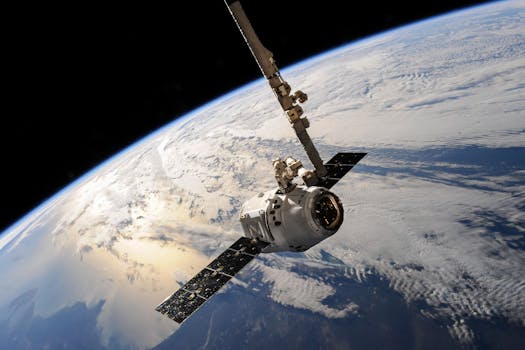The Future of Satellites: Revolutionizing Global Connectivity
The future of satellites is poised to revolutionize global connectivity, enabling faster and more reliable communication networks. With advancements in space technology, satellites are becoming increasingly important for a wide range of applications, from navigation and communication to weather forecasting and Earth observation.

The Future of Satellites: Revolutionizing Global Connectivity
The future of satellites is a topic of great interest and importance, as these space-based systems are poised to play a vital role in shaping the future of global connectivity. With the increasing demand for faster and more reliable communication networks, satellites are becoming an essential component of modern telecommunications infrastructure. In this article, we will explore the future of satellites and their potential impact on global connectivity.
Introduction to Satellites
Satellites have been in use for several decades, with the first artificial satellite, Sputnik 1, launched by the Soviet Union in 1957. Since then, thousands of satellites have been launched into orbit, serving a wide range of purposes, including navigation, communication, weather forecasting, and Earth observation. Satellites have revolutionized the way we communicate, navigate, and understand our planet, and their importance is only expected to grow in the future.
Advancements in Space Technology
Recent advancements in space technology have made it possible to build smaller, more efficient, and more cost-effective satellites. The development of new materials and manufacturing techniques has enabled the production of smaller and lighter satellites, known as smallsats or nanosats, which can be launched into orbit at a lower cost than traditional satellites. Additionally, advancements in propulsion systems and power generation have improved the performance and lifespan of satellites, allowing them to operate for longer periods and cover larger areas.
Applications of Satellites
Satellites have a wide range of applications, including navigation, communication, weather forecasting, and Earth observation. Navigation satellites, such as the Global Positioning System (GPS), provide location information and timing signals, enabling accurate navigation and mapping. Communication satellites, such as geostationary satellites, provide broadband internet access and enable global communication networks. Weather forecasting satellites, such as geostationary operational environmental satellites, monitor weather patterns and provide early warnings for severe weather events. Earth observation satellites, such as the Landsat series, collect data on the Earth’s surface and atmosphere, providing valuable insights into climate change, natural resources, and environmental monitoring.
Future of Satellites
The future of satellites is exciting and rapidly evolving. With the increasing demand for faster and more reliable communication networks, satellites are becoming an essential component of modern telecommunications infrastructure. The development of new satellite constellations, such as OneWeb and Starlink, is expected to provide global broadband internet access, bridging the digital divide and enabling remote communities to access the internet. Additionally, the use of satellites for IoT (Internet of Things) applications, such as smart cities and industrial automation, is expected to grow, enabling the creation of more efficient and connected systems.
Challenges and Opportunities
Despite the many opportunities presented by satellites, there are also challenges to be addressed. The growing number of satellites in orbit is increasing the risk of collisions and space debris, which can pose a significant threat to the long-term sustainability of space exploration. Additionally, the use of satellites for military and surveillance purposes raises concerns about privacy and security. However, these challenges also present opportunities for innovation and collaboration, as governments, industry leaders, and academia work together to develop new technologies and regulations that will ensure the safe and responsible use of satellites.



